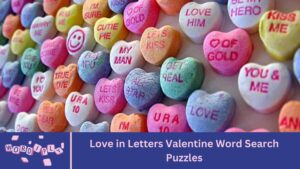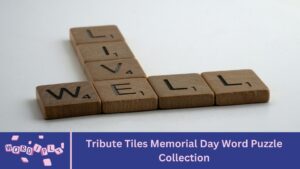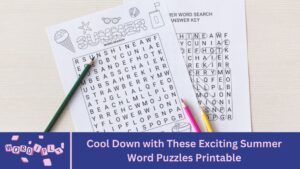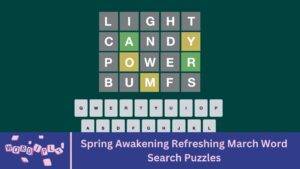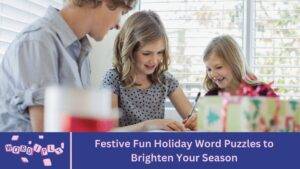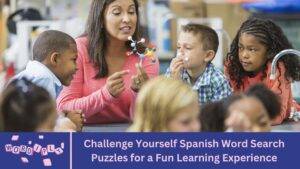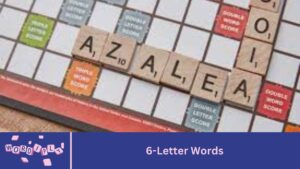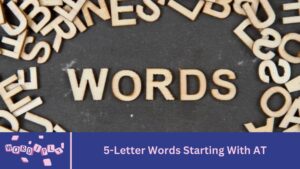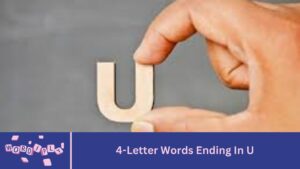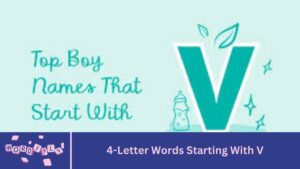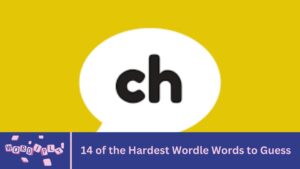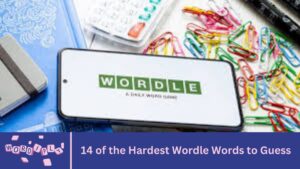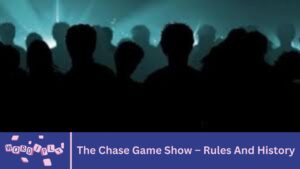Wordle starting words – report highlights
- Based on WordsRated’s analysis, the optimal starting words for Wordle are CRANE, which is effective for all available solutions, and SAUCY, which is ideal for solutions remaining as of February 2024.
- For Normal mode, top alternative starting words include SLATE, SALET, ROATE, and STARE.
- In Hard mode, DEALT is considered the best starting word. Additionally, the word pair COALS and NITER is the most effective combination for the first two guesses.
- The letter “S” appears at the start of 15.81% of Wordle solutions, making it the most frequent starting letter.
- “A” is the most common second and third letter, while “E” is the most common fourth and fifth letter. Overall, “E” is the most prevalent letter across all Wordle solutions, appearing in 10.65% of them.
- The letter “R” is found in 7.77% of solutions, more frequently than any other consonant.
| Starting word | Recommended by: |
| CRANE (all solutions) | WordsRated |
| SAUCY (remaining solutions – as of February, 2024) | WordsRated |
| SLATE | Wordlebot |
| SALET | MIT researchers |
| ROATE | Tyler Glaiel (game designer and programmer) |
| STARE | Average Wordle player |
| DEALT (Hard mode) | Wordlebot |
In Wordle, the choice of the initial word is crucial for solving the puzzle efficiently. Failing to identify correctly placed green letters or misplaced yellow letters on the first turn can significantly affect the number of turns needed to find the solution.
Players typically use three main strategies when selecting their starting word:
- Choosing Common Letters: This increases the likelihood of identifying letters that appear in the solution.
- Using Many Vowels: Including several vowels can simplify the guessing process.
- Opting for Unique Letters: Avoiding duplicate letters helps maximize the information gained from each guess.
While Wordle’s dictionary contains nearly 13,000 words, only 2,309 are potential solutions. However, players can use any word from the game’s word bank and apply careful deduction to narrow down the answer and solve the puzzle in fewer turns.
7 best starting words for Wordle
The right starting word can greatly influence your chances of winning, losing, or reducing the number of turns required to complete a Wordle level. While there’s no guaranteed solution that works every time, we’ve identified some of the most effective starting words used historically in Wordle. Try these to see if they improve your game!
CRANE (all words)
We analyzed the top starting words for Wordle by summing the frequencies of the top 5 letters in each position. Based on this analysis, CRANE emerged as the best starting word among all available options.
Here’s why CRANE stands out:
- Score: CRANE has the highest score of 59.55.
- Vowels: It includes the two most frequent vowels, “A” (#2) and “E” (#1).
- Consonants: It features two of the five most common consonants, “R” (#1) and “N” (#5).
- Positioning: The letter “C” appears in the first position, where it is the second most common letter
To compare CRANE with other top-rated words, refer to the table below from WordsRated’s analysis:
| # | Word | Score |
| 1 | CRANE | 59.55 |
| 2 | SAINT | 59.34 |
| 3 | CRONE | 56.82 |
| 4 | BRINE | 56.73 |
| 5 | TEASE | 55.83 |
| 6 | POISE | 55.40 |
| 7 | CAUSE | 54.59 |
| 8 | SAUTE | 54.41 |
| 9 | STALE | 54.36 |
| 10 | SHINE | 53.49 |
SAUCY (remaining words)
Our analysis indicates that, as of February 2024, SAUCY is the best starting word to use from the remaining solutions.
Here’s why SAUCY stands out:
- Score: SAUCY has a score of 62.15, making it 1.59% higher than the second-best word, SAUCE.
- Letter Placement: It includes the most common letters for the first, second, and fifth positions (“S,” “A,” and “Y” respectively).
- Additional Letters: SAUCY also features “U” and “C,” which are ranked as the fifth highest in frequency for their respective positions among the remaining solutions.
To compare SAUCY with other top-rated words, refer to the table below from WordsRated’s analysis:
| # | Word | Score |
| 1 | SAUCY | 62.15 |
| 2 | SAUCE | 61.18 |
| 3 | SOAPY | 58.34 |
| 4 | SEIZE | 56.56 |
| 5 | CEASE | 56.41 |
| 6 | BRINY | 55.88 |
| 7 | CRIER | 55.73 |
| 8 | SALLY | 55.67 |
| – | SADLY | 55.67 |
| 10 | SOOTY | 55.21 |
SLATE
Wordlebot, the official assistant from The New York Times, recommends SLATE as an optimal opening word for players in Normal mode.
Here’s why SLATE is highly recommended:
- Skill Rating: SLATE is rated 99/100 by Wordlebot, indicating it’s among the best starting words.
- Success Rate: Only 1.70% of players using SLATE fail to solve the Wordle in the allotted time.
- Letter Frequency: SLATE includes the most common first letter (“S”), the most common third letter (“A”), and the most common fifth letter (“E”).
- Consonants: It also features “L,” the third-most common consonant, and “T,” the second-most common consonant overall.
Refer to the graph below to see how SLATE compares to other starting words in terms of the extra guesses needed to solve Wordle.

SALET
MIT researchers have identified SALET as a recommended starting word for Wordle. This term, which refers to a round, light helmet that protects the neck, has shown notable performance:
- Letter Usage: SALET includes 5 of the top 10 most common letters in Wordle answers.
- Performance: It performs 1% better than SLATE in narrowing down options, enhancing the chance of solving the puzzle within 6 guesses.
However, SALET cannot be used to score a perfect 1-guess Wordle since it is not included in the game’s answers and serves only as a deduction tool.
ROATE
Tyler Glaiel, a game designer and programmer, assigned values to each letter in Wordle guesses based on their results (gray = 0, yellow = 1, green = 2). His analysis found that ROATE, a financial term, yields the lowest average number of guesses to find the solution.
- Letter Usage: ROATE includes the most common consonant “R” and the second-most common consonant “T.”
- Vowels: It also features the top three vowels—“E” (#1), “A” (#2), and “O” (#3).
However, like SALET, ROATE is not a potential solution in the game and can only be used to inform subsequent guesses.
STARE
Ignoring the technical analyses, many players favor STARE as their opening word for its straightforward logic.
- Letter Placement:
- “S” is the most common first letter in Wordle answers.
- “A” is the most common letter in the third position.
- “E” is the most common letter in the fifth position.
- “T” and “R” are among the most common consonants for the second and fourth positions.
DEALT (Hard mode)
For players tackling Wordle in Hard mode, DEALT is recommended as the optimal starting word by the Wordlebot automated assistant.
- Vowels: DEALT includes “E” (#1) and “A” (#2), the most common vowels in the word bank.
- Consonants: It also features “L” and “T,” which are among the top three most common consonants (#3 and #2, respectively).
Popular starting word strategies for Wordle
While the solutions above are considered strong starting words for Wordle, other resources might suggest different options. Remember, any five-letter word from the game’s dictionary can potentially offer clues for your next guess. There’s no guaranteed ‘perfect’ word that will always lead to a win.
Vowels
Experienced Wordle players often prioritize identifying the most common vowels in their initial guess. Since there are only five vowels, they can be pinpointed more easily, providing valuable clues about the word’s structure. To maximize this strategy, players often opt for words like ‘AUDIO’ or ‘ADIEU,’ which contain four vowels. Once the vowels are placed correctly, they can focus on finding words with more consonants to complete the puzzle.
Consonants
When selecting consonants, players should aim for letters that are more common in English words. Based on frequency, words containing ‘L,’ ‘R,’ and ‘T’ are often preferred, while those with ‘J,’ ‘Q,’ ‘X,’ and ‘Z’ are generally less likely to be correct.
Duplicate letters
It’s generally recommended to avoid using the same letter twice in an early guess, unless you’re confident it’s part of the final solution. Repeating a letter can limit your ability to discover other letters by wasting valuable squares.
Plural words
It’s essential to avoid guessing plural words, as Wordle doesn’t include them as solutions. Furthermore, the letter ‘S’ rarely appears at the end of a Wordle answer. Even if it does, it’s likely to be a yellow tile, indicating it’s in the word but needs to be rearranged.
Repeat words
Once a word is the daily Wordle solution, it won’t be used again. Players can leverage past solutions as a starting point for their daily guess, but doing so will prevent them from achieving a perfect score of 1 out of 6.
Speed
Given the daily nature of Wordle, players have a full 24 hours to solve the puzzle. It’s essential to avoid rushing through multiple guesses at once and take time to consider various possibilities.
The following graph illustrates the five most popular Wordle starting words:
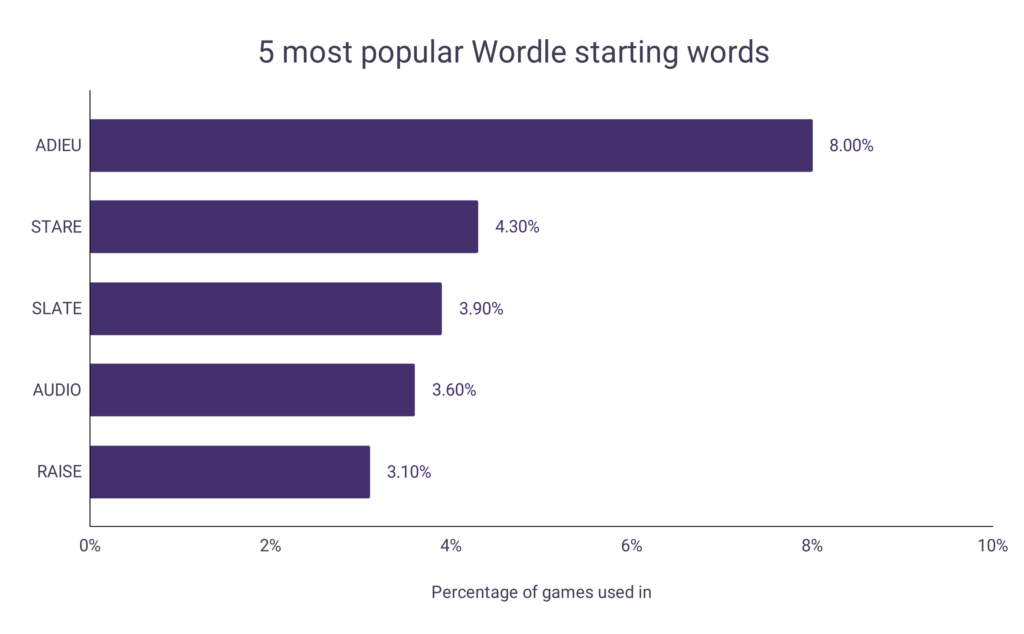
NYT Wordlebot highest ranking words
The New York Times’ Wordlebot has ranked its top-performing words for first guesses in each game mode based on skill level. A higher skill level indicates a more effective word for solving puzzles.
- SLATE is the highest-ranked word for a first guess in Normal mode, according to the Wordlebot.
- While SLATE is the most effective, CRANE, CRATE, SLANT, and TRACE are equally effective based on the bot’s analysis.
- For Hard mode, DEALT has been identified as the top-performing word.
| Normal mode | Hard mode |
| CRANE (99) | DEALT (99) |
| CRATE (99) | TRIPE (95) |
| SLANT (99) | SHALT (94) |
| SLATE (99) | TAILS (94) |
| TRACE (99) | PETAL (93) |
| CARTE (98) | PLANE (93) |
| LANCE (98) | SLANT (93) |
| LEAST (98) | SLATE (93) |
| TRICE (98) | TALES (93) |
| ROAST (97) | TRACE (93) |
Most common letters in Wordle
“By analyzing Wordle’s solution list, we can determine the frequency of each letter and identify the most effective letters for a starting word.
- Based on the complete list of Wordle solutions, ‘E’ is the most frequent letter, appearing in 10.65% of words.
- ‘A’ follows at 8.45%, and ‘R’ at 7.77%.Even when excluding past Wordle answers, ‘E’ remains the most common letter, appearing in 10.57% of words.
- ‘A’ is again the second most frequent at 8.14%, followed by ‘R’ at 7.60%.”
| Letter | Count (full) | Percentage (full) | Count (remaining) | Percentage (remaining) |
| A | 975 | 8.45% | 546 | 8.14% |
| B | 280 | 2.43% | 165 | 2.46% |
| C | 475 | 4.11% | 269 | 4.01% |
| D | 393 | 3.40% | 240 | 3.58% |
| E | 1230 | 10.65% | 709 | 10.57% |
| F | 229 | 1.98% | 140 | 2.09% |
| G | 310 | 2.69% | 171 | 2.55% |
| H | 387 | 3.35% | 208 | 3.10% |
| I | 670 | 5.80% | 399 | 5.95% |
| J | 27 | 0.23% | 17 | 0.25% |
| K | 210 | 1.82% | 115 | 1.71% |
| L | 716 | 6.20% | 419 | 6.24% |
| M | 316 | 2.74% | 189 | 2.82% |
| N | 573 | 4.96% | 338 | 5.04% |
| O | 753 | 6.52% | 419 | 6.24% |
| P | 365 | 3.16% | 217 | 3.23% |
| Q | 29 | 0.25% | 15 | 0.22% |
| R | 897 | 7.77% | 510 | 7.60% |
| S | 668 | 5.79% | 420 | 6.26% |
| T | 729 | 6.31% | 400 | 5.96% |
| U | 466 | 4.04% | 282 | 4.20% |
| V | 152 | 1.32% | 97 | 1.45% |
| W | 194 | 1.68% | 117 | 1.74% |
| X | 37 | 0.32% | 18 | 0.27% |
| Y | 424 | 3.67% | 268 | 3.99% |
| Z | 40 | 0.35% | 22 | 0.33% |
Most common first letter in Wordle
Based on Wordle’s complete solution list, ‘S’ is the most common first letter, appearing in 15.81% of words. When considering only unsolved solutions, the frequency of ‘S’ increases to 17.21%, making it the most likely first letter for future answers.
| First letter | Count (full) | Percentage (full) | Count (remaining) | Percentage (remaining) |
| A | 140 | 6.06% | 69 | 5.14% |
| B | 173 | 7.49% | 98 | 7.30% |
| C | 198 | 8.58% | 111 | 8.27% |
| D | 111 | 4.81% | 77 | 5.74% |
| E | 72 | 3.12% | 41 | 3.06% |
| F | 135 | 5.85% | 79 | 5.89% |
| G | 115 | 4.98% | 63 | 4.69% |
| H | 69 | 2.99% | 38 | 2.83% |
| I | 34 | 1.47% | 19 | 1.42% |
| J | 20 | 0.87% | 15 | 1.12% |
| K | 20 | 0.87% | 10 | 0.75% |
| L | 87 | 3.77% | 48 | 3.58% |
| M | 107 | 4.63% | 59 | 4.40% |
| N | 37 | 1.60% | 23 | 1.71% |
| O | 41 | 1.78% | 29 | 2.16% |
| P | 141 | 6.11% | 87 | 6.48% |
| Q | 23 | 1.00% | 13 | 0.97% |
| R | 105 | 4.55% | 64 | 4.77% |
| S | 365 | 15.81% | 231 | 17.21% |
| T | 149 | 6.45% | 78 | 5.81% |
| U | 33 | 1.43% | 12 | 0.89% |
| V | 43 | 1.86% | 28 | 2.09% |
| W | 82 | 3.55% | 47 | 3.50% |
| X | 0 | 0.00% | 0 | 0.00% |
| Y | 6 | 0.26% | 1 | 0.07% |
| Z | 3 | 0.13% | 2 | 0.15% |
Most common second letter in Wordle
“A” is the most common letter in the second position, appearing in 13.17% of all Wordle solutions. Even when excluding previously solved solutions, “A” remains the most frequent letter in the second position, with a frequency of 13.64%.
| Second letter | Count (full) | Percentage (full) | Count (remaining) | Percentage (remaining) |
| A | 304 | 13.17% | 183 | 13.64% |
| B | 16 | 0.69% | 9 | 0.67% |
| C | 40 | 1.73% | 23 | 1.71% |
| D | 20 | 0.87% | 14 | 1.04% |
| E | 241 | 10.44% | 150 | 11.18% |
| F | 8 | 0.35% | 6 | 0.45% |
| G | 11 | 0.48% | 0 | 0.00% |
| H | 144 | 6.24% | 72 | 5.37% |
| I | 201 | 8.71% | 129 | 9.61% |
| J | 2 | 0.09% | 0 | 0.00% |
| K | 10 | 0.43% | 6 | 0.45% |
| L | 200 | 8.66% | 111 | 8.27% |
| M | 38 | 1.65% | 23 | 1.71% |
| N | 87 | 3.77% | 44 | 3.28% |
| O | 279 | 12.08% | 147 | 10.95% |
| P | 61 | 2.64% | 37 | 2.76% |
| Q | 5 | 0.22% | 2 | 0.15% |
| R | 267 | 11.56% | 156 | 11.62% |
| S | 16 | 0.69% | 6 | 0.45% |
| T | 77 | 3.33% | 41 | 3.06% |
| U | 185 | 8.01% | 125 | 9.31% |
| V | 15 | 0.65% | 9 | 0.67% |
| W | 44 | 1.91% | 26 | 1.94% |
| X | 14 | 0.61% | 5 | 0.37% |
| Y | 22 | 0.95% | 17 | 1.27% |
| Z | 2 | 0.09% | 1 | 0.07% |
Most common third letter in Wordle
The third letter in Wordle solutions is crucial for players to identify. ‘A’ is the most common letter in this position, appearing in 13.25% of all solutions and 12.59% of remaining solutions.
| Third letter | Count (full) | Percentage (full) | Count (remaining) | Percentage (remaining) |
| A | 306 | 13.25% | 169 | 12.59% |
| B | 56 | 2.43% | 37 | 2.76% |
| C | 56 | 2.43% | 33 | 2.46% |
| D | 75 | 3.25% | 45 | 3.35% |
| E | 177 | 7.67% | 100 | 7.45% |
| F | 25 | 1.08% | 18 | 1.34% |
| G | 67 | 2.90% | 40 | 2.98% |
| H | 9 | 0.39% | 4 | 0.30% |
| I | 266 | 11.52% | 155 | 11.55% |
| J | 3 | 0.13% | 1 | 0.07% |
| K | 12 | 0.52% | 6 | 0.45% |
| L | 112 | 4.85% | 73 | 5.44% |
| M | 61 | 2.64% | 42 | 3.13% |
| N | 137 | 5.93% | 81 | 6.04% |
| O | 243 | 10.52% | 127 | 9.46% |
| P | 57 | 2.47% | 29 | 2.16% |
| Q | 1 | 0.04% | 0 | 0.00% |
| R | 163 | 7.06% | 87 | 6.48% |
| S | 80 | 3.46% | 55 | 4.10% |
| T | 111 | 4.81% | 69 | 5.14% |
| U | 165 | 7.15% | 94 | 7.00% |
| V | 49 | 2.12% | 33 | 2.46% |
| W | 26 | 1.13% | 17 | 1.27% |
| X | 12 | 0.52% | 7 | 0.52% |
| Y | 29 | 1.26% | 12 | 0.89% |
| Z | 11 | 0.48% | 8 | 0.60% |
Most common fourth letter in Wordle
E” is the most common letter in the fourth position, appearing in 13.77% of all solutions and 14.53% of remaining solutions.
| Fourth letter | Count (full) | Percentage (full) | Count (remaining) | Percentage (remaining) |
| A | 162 | 7.02% | 89 | 6.63% |
| B | 24 | 1.04% | 16 | 1.19% |
| C | 150 | 6.50% | 90 | 6.71% |
| D | 69 | 2.99% | 37 | 2.76% |
| E | 318 | 13.77% | 195 | 14.53% |
| F | 35 | 1.52% | 23 | 1.71% |
| G | 76 | 3.29% | 44 | 3.28% |
| H | 28 | 1.21% | 14 | 1.04% |
| I | 158 | 6.84% | 89 | 6.63% |
| J | 2 | 0.09% | 1 | 0.07% |
| K | 55 | 2.38% | 27 | 2.01% |
| L | 162 | 7.02% | 97 | 7.23% |
| M | 68 | 2.94% | 37 | 2.76% |
| N | 182 | 7.88% | 105 | 7.82% |
| O | 132 | 5.72% | 84 | 6.26% |
| P | 50 | 2.17% | 30 | 2.24% |
| Q | 0 | 0.00% | 0 | 0.00% |
| R | 150 | 6.50% | 72 | 5.37% |
| S | 171 | 7.41% | 104 | 7.75% |
| T | 139 | 6.02% | 80 | 5.96% |
| U | 82 | 3.55% | 51 | 3.80% |
| V | 45 | 1.95% | 27 | 2.01% |
| W | 25 | 1.08% | 18 | 1.34% |
| X | 3 | 0.13% | 1 | 0.07% |
| Y | 3 | 0.13% | 2 | 0.15% |
| Z | 20 | 0.87% | 9 | 0.67% |
Most common fifth letter in Wordle
E” is the most common letter in the fifth position, appearing in 18.28% of all solutions. However, when excluding previously solved solutions, “Y” becomes the most common letter in the fifth position, with a frequency of 17.59%.
| Fifth letter | Count (full) | Percentage (full) | Count (remaining) | Percentage (remaining) |
| A | 63 | 2.73% | 36 | 2.68% |
| B | 11 | 0.48% | 5 | 0.37% |
| C | 31 | 1.34% | 12 | 0.89% |
| D | 118 | 5.11% | 67 | 4.99% |
| E | 422 | 18.28% | 223 | 16.62% |
| F | 26 | 1.13% | 14 | 1.04% |
| G | 41 | 1.78% | 24 | 1.79% |
| H | 137 | 5.93% | 80 | 5.96% |
| I | 11 | 0.48% | 7 | 0.52% |
| J | 0 | 0.00% | 0 | 0.00% |
| K | 113 | 4.89% | 66 | 4.92% |
| L | 155 | 6.71% | 90 | 6.71% |
| M | 42 | 1.82% | 28 | 2.09% |
| N | 130 | 5.63% | 85 | 6.33% |
| O | 58 | 2.51% | 32 | 2.38% |
| P | 56 | 2.43% | 34 | 2.53% |
| Q | 0 | 0.00% | 0 | 0.00% |
| R | 212 | 9.18% | 131 | 9.76% |
| S | 36 | 1.56% | 24 | 1.79% |
| T | 253 | 10.96% | 132 | 9.84% |
| U | 1 | 0.04% | 0 | 0.00% |
| V | 0 | 0.00% | 0 | 0.00% |
| W | 17 | 0.74% | 9 | 0.67% |
| X | 8 | 0.35% | 5 | 0.37% |
| Y | 364 | 15.76% | 236 | 17.59% |
| Z | 4 | 0.17% | 2 | 0.15% |
A graph is given below to show the most frequent letters per position for Wordle solutions:
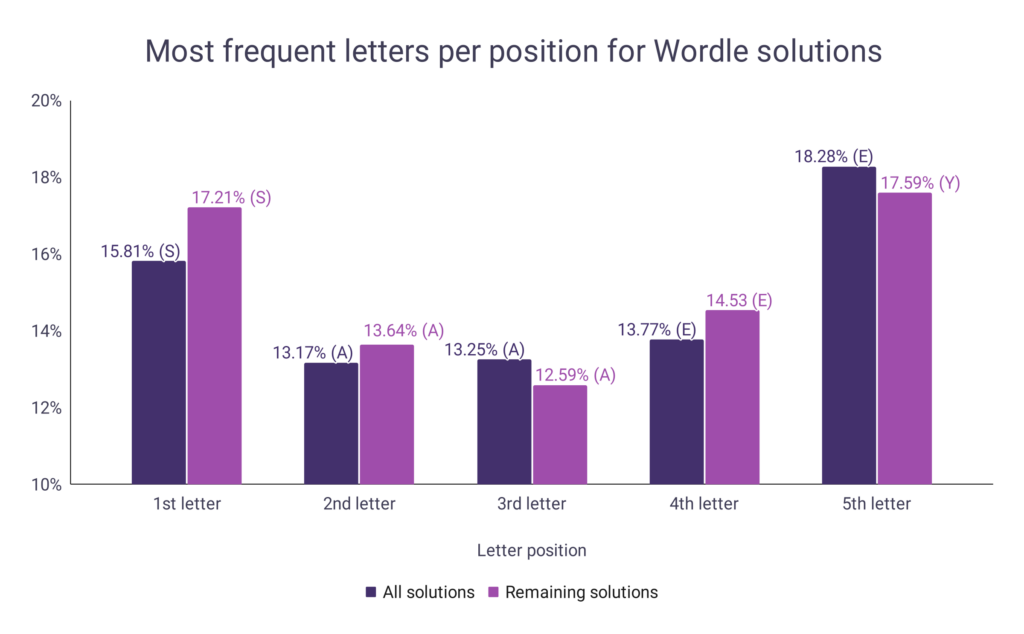
“When analyzing the letters in Wordle solution words, consonants are found to be significantly more frequent than vowels. Comparing the entire list of Wordle solutions to the remaining unsolved solutions, the proportion of consonants to vowels remains relatively constant.”
| Type | Count (full) | Percentage (full) | Count (remaining) | Percentage (remaining) |
| Consonants | 7451 | 64.54% | 4355 | 64.90% |
| Vowels | 4094 | 35.46% | 2355 | 35.10% |
A graph is given below to compare the total consonants vs vowels in Wordle solutions:
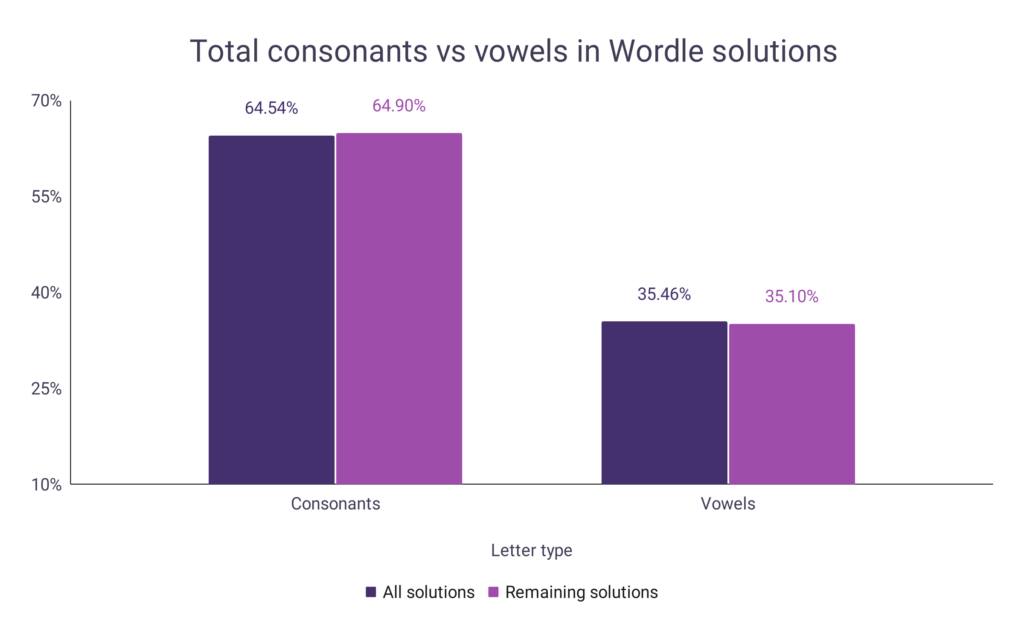
Consonants vs. vowels by position
The likelihood of a solution letter being a consonant or a vowel depends heavily on its position within the word. Consonants are significantly more common in positions 1, 4, and 5, while positions 2 and 3 exhibit a more balanced distribution of consonants and vowels.
| Position | Consonants(full) | Vowels (full) | Consonants (remaining) | Vowels (remaining) |
| Position 1 | 1989 (86.14%) |
320 (13.86%) |
1172 (87.33%) |
170 (12.67%) |
| Position 2 | 1099 (47.60%) |
1210 (52.40%) |
608 (45.31%) |
734 (54.69%) |
| Position 3 | 1152 (49.89%) |
1157 (50.11%) |
697 (51.94%) |
645 (48.06%) |
| Position 4 | 1457 (63.10%) |
852 (36.90%) |
834 (62.15%) |
508 (37.85%) |
| Position 5 | 1754 (75.96%) |
555 (24.04%) |
1044 (77.79%) |
298 (22.21%) |
A graph is given below to show the percentage of consonants vs. vowels by their letter position in Wordle solutions:
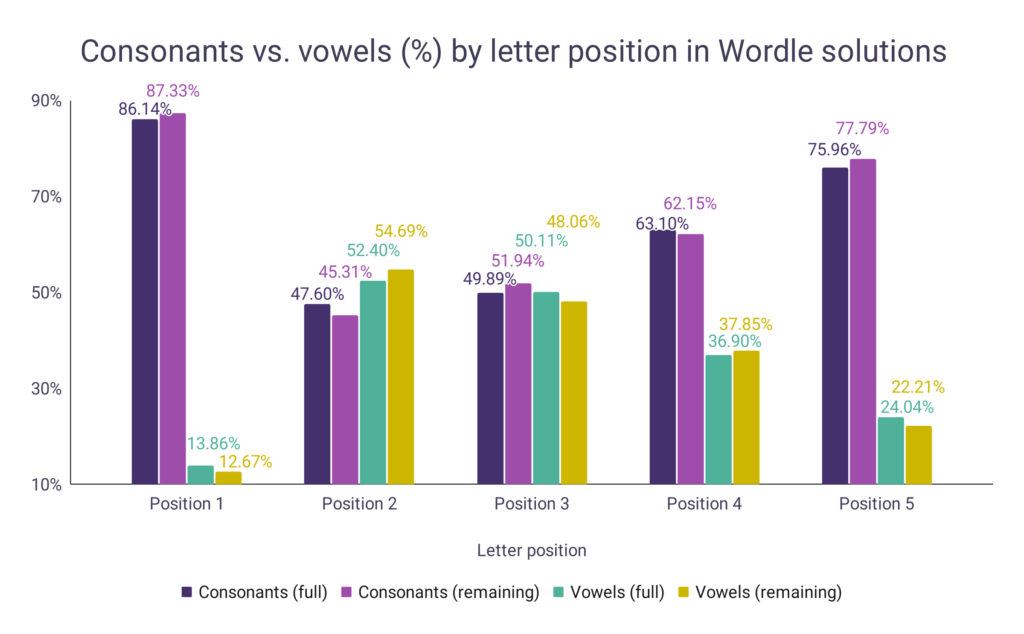
Wordle starting guess combinations
Rather than focusing solely on the best single starting word, you might find it beneficial to consider an optimal two-word combination. This strategy allows you to evaluate your options after playing 10 letters instead of 5, potentially providing more valuable clues for turns 3 and 4.
- A comprehensive simulation of Wordle games revealed COALS and NITER as the statistically best-performing word pair.
- This combination yielded yellow letters in 97% of games and green letters in 62.4% of games.
- When the goal is to identify consonants, DARNS and LETCH were found to be the most effective.
- This pair produced yellow letters in 90.8% of games and green letters in 37% of games.
- Starting guess combinations can be particularly beneficial for Wordle variations with multiple solutions, such as Quordle and Octordle.
A list is given below to compare the most effective first and second guesses for Wordle (all letters):
| All letters rank | Word 1 | Word 2 | Score |
| #1 | COALS | NITER | 100.00 |
| #2 | CANER | TOILS | 99.96 |
| #3 | CARNS | TOILE | 99.84 |
| #4 | COALS | NITRE | 99.84 |
| #5 | CONTE | RIALS | 99.76 |
| #6 | CITER | LOANS | 99.76 |
| #7 | HONES | TRAIL | 99.67 |
| #8 | CAIRN | TOLES | 99.63 |
| #9 | COIRS | LATEN | 99.63 |
| #10 | CITER | SOLAN | 99.63 |
| #11 | AISLE | NORTH | 99.55 |
| #12 | COLAS | NITRE | 99.55 |
| #13 | HOSEL | TRAIN | 99.55 |
| #14 | HOSEN | TRAIL | 99.55 |
| #15 | CEILS | TORAH | 99.43 |
A list is given below to compare the most effective first and second guesses for Wordle (consonants only):
| Consonants rank | Word 1 | Word 2 | Score |
| #1 | DARNS | LETCH | 100.00 |
| #2 | LETCH | NARDS | 99.85 |
| #3 | LETCH | NERDS | 99.85 |
| #4 | LETCH | YARNS | 99.71 |
| #5 | LETCH | SYREN | 99.49 |
| #6 | CENTS | REDLY | 99.42 |
| #7 | HENTS | LYCRA | 99.34 |
| #8 | GNARS | LETCH | 99.20 |
| #9 | GNARL | TECHS | 99.20 |
| #10 | LYCRA | THENS | 99.13 |
| #11 | CENTS | REPLY | 98.91 |
| #12 | BERYL | CENTS | 98.62 |
| #13 | CENTS | PLYER | 98.61 |
| #14 | DYERS | LETCH | 98.40 |
| #15 | REDLY | TECHS | 98.25 |
Should your Wordle start word have lots of vowels?
- While vowels are less frequent overall in Wordle solutions, they are particularly prominent in positions 2, 3, 4, and 5.
- Therefore, using multiple vowels in your opening guess can be advantageous.
- Identifying vowels early on can provide valuable clues about the word’s structure, aiding in the subsequent determination of missing consonants.
What is the best follow-up word in Wordle?
Even with the most accurate first guess, solving Wordle in one turn is exceptionally rare. After using our guide to choose the optimal opening move, you might be wondering how to strategize your second guess.
Effective second and subsequent guesses depend on the letters revealed in previous turns. If you used the popular choice STARE, consider follow-up words like COULD, DOING, or PHONY, as they contain frequently occurring letters not present in STARE.
When selecting your follow-up word, prioritize common letters while avoiding repetition of letters from your first guess or current turn. This approach increases your chances of finding yellow and green squares, ultimately leading to a successful Wordle solution in minimal turns.
What is the worst Wordle starter word?
- Many Wordle players have found XYLYL, a chemistry term, to be one of the least effective starting words.
- It contains only three unique letters, all of which are uncommon, and lacks any vowels.
FAQ’s
1. What is Wordle?
Wordle is a popular online word puzzle game where players try to guess a five-letter word within six attempts. Each guess provides feedback on letter placement and correctness.
2. Why is choosing the right starting word important in Wordle?
Choosing a good starting word can give you an advantage by revealing useful information about the target word early, such as which letters are in the word and their positions.
3. What are some of the best starting words in Wordle?
Commonly recommended starting words include “CRANE,” “SLATE,” “CRATE,” “SLANT,” and “TRACE.” These words cover common vowels and consonants, maximizing the chances of getting useful feedback.
4. Why is the word “CRANE” often recommended?
“CRANE” is frequently suggested because it includes two common vowels (A and E) and three common consonants (C, R, and N), providing a balanced approach to uncovering both vowels and consonants.
5. Should I always use the same starting word?
Using the same starting word consistently can help you become more familiar with potential patterns and outcomes, but switching it up can also be beneficial depending on the situation.
6. Is it better to start with words containing vowels or consonants?
Starting with a word that balances both vowels and consonants is generally recommended. However, some players prefer to focus on vowel-heavy words first to quickly determine which vowels are in the target word.
7. How do experts determine the best starting words?
Experts analyze large datasets of Wordle solutions to find words that reveal the most information about the target word. They consider letter frequency, placement, and the likelihood of specific letter combinations.
8. Are there any starting words that should be avoided?
Words with rare letters like Q, X, Z, and J are generally less effective as starting words because they are less likely to appear in the target word.
9. What role does letter frequency play in choosing a starting word?
Letter frequency analysis helps identify which letters are most commonly used in five-letter words, guiding the selection of starting words that maximize the likelihood of getting useful feedback.
10. Is there a single best starting word for Wordle?
There is no definitive “best” starting word, as it depends on personal strategy and the randomness of the game. However, certain words like “CRANE” and “SLATE” are consistently strong choices.
11. What is a good strategy if my starting word reveals no correct letters?
If your starting word reveals no correct letters, you should choose a new word that includes entirely different letters. This increases the chances of uncovering the correct letters.
12. Are there any tools to help find the best starting words?
Yes, there are tools and websites that analyze word patterns and frequencies to suggest optimal starting words. Some even simulate games to test the effectiveness of different starting words.
13. Can starting words vary in effectiveness depending on the Wordle puzzle?
Yes, the effectiveness of a starting word can vary depending on the target word for that day. Some starting words might perform better or worse depending on the specific word.
14. How does the starting word “SLATE” compare to others?
“SLATE” is another popular choice because it contains two common vowels (A and E) and three frequent consonants (S, L, and T), making it a well-rounded option.
15. What are some vowel-heavy starting words?
Words like “ADIEU” and “AUDIO” are vowel-heavy options that can help identify which vowels are in the target word early in the game.
16. Are there starting words that focus on common consonants?
Yes, words like “STORM” and “CRISP” focus on common consonants, which can help narrow down possible consonant patterns in the target word.
17. How often should I change my starting word strategy?
It’s a good idea to experiment with different starting words to see which ones work best for you. Changing strategies can help adapt to different puzzles and keep the game interesting.
18. What starting words do top players use?
Top players often use words like “CRANE,” “SLATE,” and “CRATE” because they have been statistically shown to perform well in revealing letters and patterns.
19. Can I use starting words from other languages in Wordle?
Wordle is based on English words, so starting words from other languages are not recommended unless they also happen to be valid English words.
20. Is it helpful to use an anagram solver after the first guess?
While some players use anagram solvers, it can take away from the challenge and fun of the game. It’s often more satisfying to solve the puzzle using your own deduction skills.

